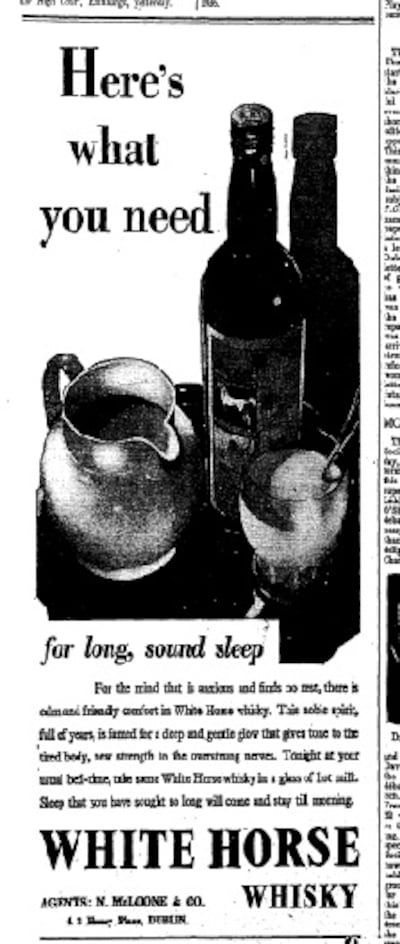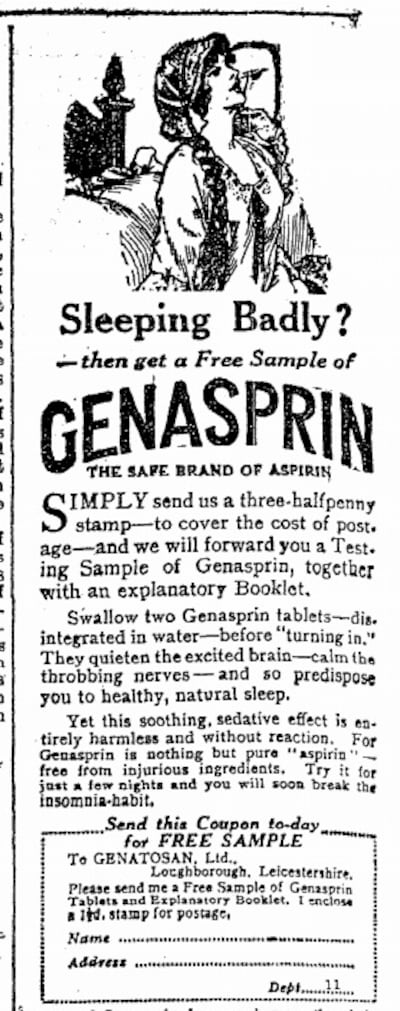In the first of a series looking at the archives of The Irish Times concerning health, even a quick perusal reveals that sleeping disorders and insomnia are no modern phenomenon.
__________________
During the 1880s, death from overdose of choral – a common sleeping draught – was a regular verdict at inquests, and the sleeping difficulties of many public figures, including the Land League's Michael Davitt, was considered newsworthy. In 1891, the paper reported that the Bishop of Cashel "who is suffering from insomnia, has been obliged to seek rest and change, and for this purpose has left Ireland for Algiers".

A Court and Fashion column in 1894, meanwhile, informed the nation that Mr Herbert Gardner, the president of the Board of Agriculture, who had been travelling in the south of France to regain health, "no longer suffers from insomnia . . . and will be able to resume his duties".
One 1885 article, Cures for Insomnia, featured a range of the latest suggestions including: "the application of mustard plasters to the abdomen . . .", "a freshly-made solution of lactate of soda", or "the administration of a tumblerful of hot claret and water with sugar and nutmeg".

The same article notes that “the irritant properties of the air which hinder sleep during hot weather can be counteracted by sprinkling the floor with water,” but concluded: “When sleep is broken by severe pain nothing is more useful than morphia.”
Cures For Sleeplessness in 1890, meanwhile, included: "get up and drink half a glass of water, and walk around the room."; and a pint of hot water taken one hour before each meal and one last thing at night. A 1896 lecture at the Dublin Health Society was told that insomnia in children under 14 could generally be alleviated by "elevating the feet above four inches".
And from advice to the sleepless in 1894: “ . . . undress in the dark. Light stimulates and arouses the activities . . . Put some chopped ice in a rubber bag and place it at the lower extremity of the spine. This is particularly quieting to the nerves . . . Do not use a pillow. Relax every muscle so far as it is possible. Sprawl over the bed with arms and legs stretched out . . . Make up your mind that you want to keep awake long enough to hear some one come in or go out to their next day’s work. You will drop asleep immediately.”
A cup of hot comfort
Bovril was one of the earliest products to target the insomniac. Readers in the 1890s were told a cup was “the safest, surest sleeping draught,” and in the 1900s the manufacturers of Horlicks Malted Milk decided that the sleepless would also benefit from a cup of their hot comfort. By the 1930s, however, a nocturnal beverage advocated for “long sound sleep” was White Horse Whiskey added to a glass of hot milk.

Veronal (barbital) was one drug of choice for the sleepless in the 1920s, leading to many poisoning cases, and the papers of that decade were also populated with ads for many products claiming sedative properties. Genasprin – “pure aspirin” proclaimed that swallowing two tablets in water before “turning in” would “ensure sound, healthy sleep”, while Winox Wine Food maintained that after a glass, “sleeplessness will no longer bother you”.
Dr Cassells Pillls (for indigestion and Nervous Insomnia), Halls Tonic, Virol and Milk, Glax-Ovo vitamins were just some of the many other brands looking to put Irish insomniacs to sleep.
Even "State Opticians" Dixon & Hempenstall advertised that eye strain induced ". . . peevishness, bad temper, insomnia. . . all of which can be prevented or cured by having the sight tested, and wearing a pair of their celebrated . . . Pince-nez".
From the paper’s non-sponsored columns came the household hints that “onions eaten raw are recommended as a remedy for insomnia,” while readers were reminded of the benefits of resting on a pillow stuffed with hops.
Also in the 1920s our foreign service correspondent reported to the paper on studies by Dr Nathaniel Kleitman at the University of Chicago. His research focused on six students who volunteered to remain awake for 115 hours, but could only keep awake if they kept their muscles contracted.
Dr Kleitman concluded: “persons fall asleep when outside impulses are discontinued…Nervous fatigue produces muscular contraction and prevents sleep…Sleep is not so essential as complete relaxation. When the nervous subject can learn that he will find sleep easy.”
Or perhaps the Letter to the Editor from AGD in September, 1883 contained the answer: "I discovered years ago, that I could not sleep if I lay north and south . . . I proved that I could sleep best lying east to west, particularly with the head to the west . . . I always carry a small pocket compass, so that sleeping at strange hotels I am enabled either to select a room in which the bed is so placed, or to have the bed shifted . . . I feel convinced that in many instances where persons are suffering from insomnia, they would find instant relief if the position in which they lay was changed . . . "
- This is part of a series looking at the archives of The Irish Times concerning health.
[ Sleeping secrets: undress in the dark, walk around the room and lie east-to-westOpens in new window ]





















